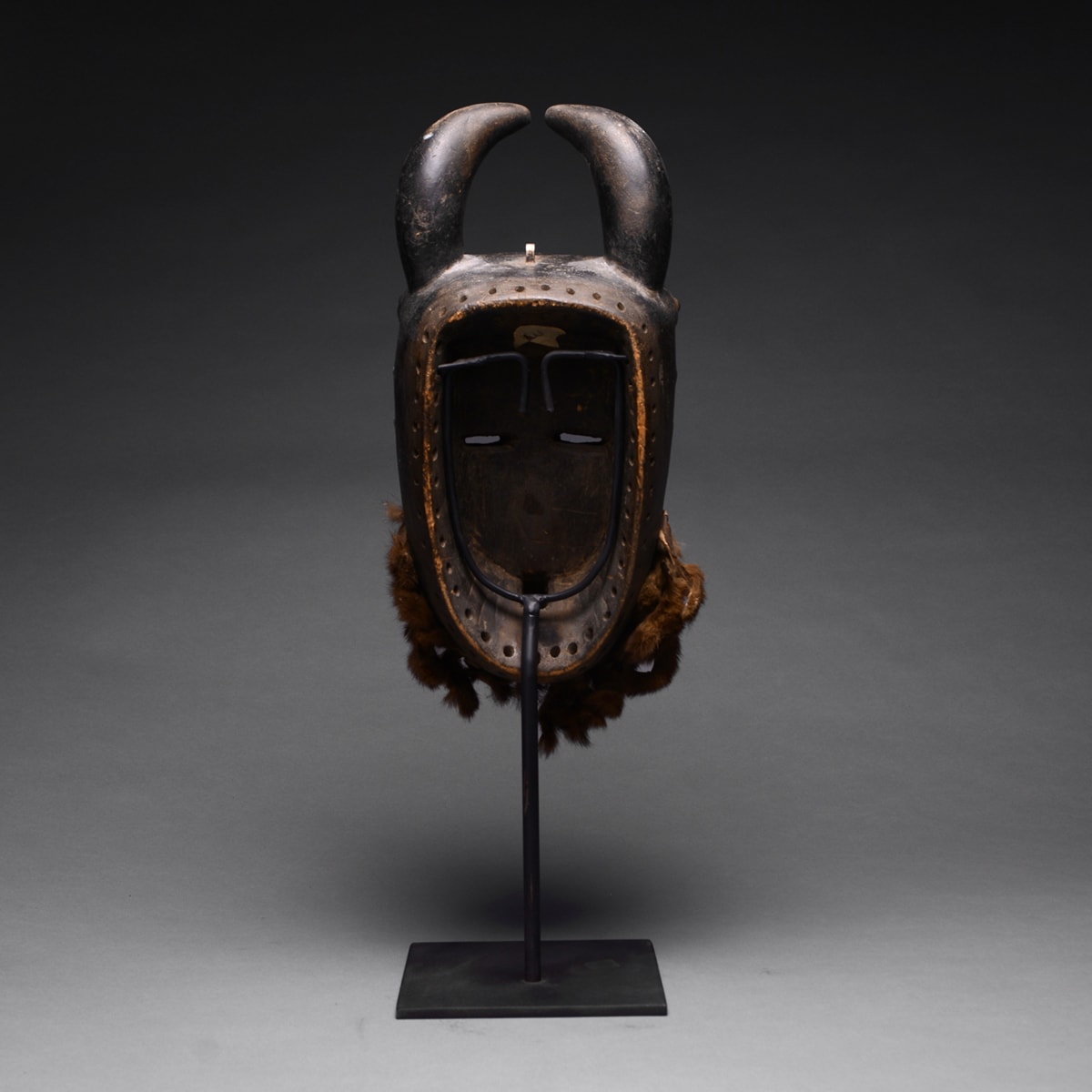Bete Wooden Face Mask, 20th Century CE
Wood and Mixed Media
33 x 16.5 cm
13 x 6 1/2 in
13 x 6 1/2 in
PF.5936
Further images
Bete masqueraders perform during burials, at the end of mourning periods, or in honor of the arrival of important dignitaries. Sometimes they, or one of their attendants, carry a lance....
Bete masqueraders perform during burials, at the end of mourning periods, or in honor of the arrival of important dignitaries. Sometimes they, or one of their attendants, carry a lance. This weapon likely relates to the masks original tribal function: a war mask. The face of this mask is composed of geometric volumes that, as independent bodies, seem to emerge from a flat back panel. The separate features are arranged in horizontal tiers, interrupted in the vertical only by the hooked nose and the curved horns that crown the mask. The vertical arches of the horns are echoed by the upward sweep of the oversized nostrils, which extend all the way to the corner of the eyes. Two narrow slits have been carved into the back panel to allow the wearer to see, partially obscured by the curved panel that represents the brows. There is an intimidating quality that pervades this work, no doubt related to its original function as a war mask. While this mask would have once been worn in combat to frighten the enemy, today it is used to welcome visiting dignitaries. The same artistic features that once put fear into the heart of the enemies now command the respect and admiration of important guests for the cultural traditions of the Bete tribe.







